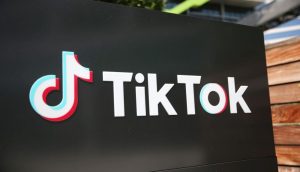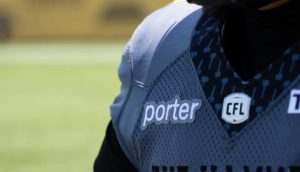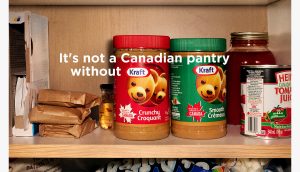The pervasive placement of brand insignia within stadiums and at event spaces juts into a consumer’s experience, causes more harm than good and is frankly being ignored, said Kim Skildum-Reid, director, Australia-based Power Sponsorship, at the 2012 Sponsorship Marketing Council of Canada Conference and Awards yesterday.
Skildum-Reid suggested that brands not sponsor exclusively during the limited timeframe of the event, but instead, invest in the anticipation leading up to the event as well as the conversation that lingers on after.
Brands can tap into event anticipation through social media and programs that gear up for them, she says, citing what Molson Canadian did with its “Official Guide to Playoff Grooming” that supported its NHL activation and asked fans to submit their unique hockey grooming styles on its Facebook page.
There is an “event experience” that lies outside of the actual game or festival, and if a brand understands its target and what matters to them, they can create a “win, win, win” scenario where all three parties involved (sponsor, event and consumer) are able to gain something of value.
Amplify the good parts of an event experience, she says, such as feeding into Canadian patriotism with interactive programs months ahead of an event like the Olympics. Also, become a fanatic for the league or event that you’re sponsoring, just as the targeted, highly engaged audience is, and the ability to change their perception and behaviour toward your brand will increase favourably, she added.
Skildum-Reid is not a fan of brands smuggling their logos into every corner of the experience, for example on branded sports jerseys. The sponsorship consultant said that if a league gives a brand the ability to trademark their jerseys, this will only lead to consumers becoming “outraged, eventually get used to it and ignore it and [the logos] become just like wallpaper [to them].”
If a brand’s sponsorship budget is small and they can’t invest in an event or team through significant media, player appearances or brand signage, then negotiate intellectual property and reflect that back to the target audience and make it so much bigger than it seems, she said.
Skildum-Reid used Weet-Bix, a cereal brand in New Zealand, and its “Birthday Club” promotion as an example of this. The brand purchased intellectual property from the All Blacks rugby team in the form of logos and signatures from each team member. Wanting to target boys under the age of 12, Weet-Bix created an online program that invited moms to provide their child’s name, mailing address and birthday as well as sporting activities they participated in. Customized birthday cards that spoke of the activities they enjoy were sent to the boys with a replica signature from their favourite All Blacks player. Skildum-Reid said that it much more successful than placing a logo on boards in the rugby stadiums, as the brand was able to engage with over two million people that participated in the program.
Essentially, a brand should be using ambush marketing techniques while covering its bases, she said. Skildum-Reid may not condone ambush marketing where a brand will underhandedly make it seem like they’re a part of the experience with scores of logo placement on the outskirts. But she does respect the creativity that comes out of ambushing from brands such as Nike.
For example, she said, when the majority of media space was taken up by genuine sponsors of the FIFA World Cup in Germany, Nike used the sides of buses in the city to place LED signs of real-time updates of game scores. This resulted in a simple activation that gave intrinsic value to soccer fans that some sponsors weren’t able to provide.
Lastly, she suggested to attendees at the conference that they learn how to “lose control.” Skildum-Reid said that “much like crowd surfing,” brands need to learn to let go of the fences that surround “uninspired and tick-off-the-box sponsorships” and just enjoy the ride that comes with creative activations that don’t require each and every act being thoroughly analyzed and approved.
The SMCC 9th Annual Awards show followed the conference and the trophy for Best of Show as well as certificates for the Gold Award and Award of Distinction was handed out to winners in eight different categories:
Best of Show
– “Chevrolet Hockey Helmet Program”
Sports
– Gold Award: “Chevrolet Hockey Helmet Program”
– Award of Distinction: “BMO Team of the Week”
Arts & Entertainment
– Marilyn Michener Excellence in Arts & Entertainment Award (Gold Award): “CIBC IIFA Sponsorship”
– Award of Distinction: “Scotiabank Nuit Blanche”
Small Budget
– Gold Award: “Ready to Bet with Mise-o-jeu!”
– Award of Distinction: “TD Festival of South Asia”
Media Sponsorship
– Gold Award: “Scotiabank Hockey Day in Canada”
– Award of Distinction: “Kraft Celebration Tour”
Business-to-Business
– Award of Distinction: “IBM ‘Business 2 Business’ ”
Cause
– Gold Award: “Rickard’s is a Proud Partner of Movember Canada”
– Award of Distinction: “Canadian Breast Cancer Foundation CIBC Run for the Cure”
Special Interest
– Gold Award: “BMO Calgary Stampede”
– Award of Distinction: “À Table avec Metro”
Sustained Success
– Gold Award: “Scotiabank Community Hockey Sponsorship Program”
– Award of Distinction: “Kraft Hockeyville”
























